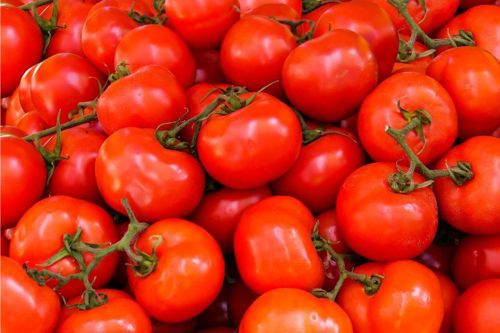Pomodoro sauce, a beloved Italian classic, has earned its place in kitchens worldwide for its simplicity and exquisite taste. Derived from the Italian word for "tomato," pomodoro sauce is a tomato-based sauce that has become a staple in pasta dishes, pizzas, and countless other Italian recipes. In this blog, we will explore the rich history, key ingredients, and versatile uses of pomodoro sauce, without revealing a specific recipe, allowing you to get creative in your own kitchen.
The Origins of Pomodoro Sauce
The roots of pomodoro sauce can be traced back to Naples, Italy, where tomatoes were first introduced in the 16th century. Initially, tomatoes were met with scepticism due to their resemblance to poisonous plants. However, as Italians gradually accepted tomatoes as safe to eat, they began to incorporate them into their cuisine. Pomodoro sauce emerged as a delicious and straightforward way to highlight this newfound ingredient.
The Core Ingredients
While there are countless variations of pomodoro sauce, the fundamental ingredients remain consistent:
Tomatoes: The heart and soul of pomodoro sauce, ripe tomatoes provide the base flavour and vibrant colour. San Marzano tomatoes, grown in the volcanic soil of Mount Vesuvius, are often favoured for their exceptional sweetness and low acidity.
Olive Oil: Quality extra virgin olive oil not only enhances the sauce's taste but also adds a delightful richness to the texture.
Garlic: Minced or thinly sliced garlic cloves infuse the sauce with a gentle, aromatic kick.
Onion: Sauteed onions lend a subtle sweetness to balance the acidity of the tomatoes.
Basil: Fresh basil leaves contribute a fragrant, herbal note that complements the tomatoes beautifully.
Salt and Pepper: These seasonings are essential to bring out the flavours of the other ingredients.
Red Pepper Flakes (Optional): If you prefer a bit of heat, red pepper flakes can be added to give the sauce a subtle kick.

How to make pomodoro sauce
Follow these steps for the Prezzo recipe for pomodoro sauce:
(Serves 4 – 6)
500g good quality tinned tomatoes. We like to use Mutti Polpa
150g Sofrito: 50g carrot – 50g celery – 50g onion (all chopped into small pieces)
100ml water
5g garlic minced
5g Salt
We like to keep our Pomodoro nice and simple so it can adapt to a wide range of dishes the key here is that the sauce gets enough time to cook to let the tomatoes simmer down nicely.
Start by cooking your sofrito on a medium heat. Fry the carrot, celery and onion softly (without browning) in a little olive oil.
Next you want to add your minced garlic and cook for 1 minute.
Next add rest of the ingredients and bring to the boil.
Turn down the heat to low & simmer for 20 minutes.
Taste and season with salt and pepper if needed.
Versatility in the Kitchen
One of the most remarkable qualities of pomodoro sauce is its versatility. While it is often associated with pasta, it can be used in various culinary creations:
Pasta: Pomodoro sauce pairs effortlessly with all types of pasta, from spaghetti to penne. It's a quick and satisfying weeknight meal option.
Pizza: As the foundation for a classic Margherita pizza, pomodoro sauce provides a vibrant, tomato-forward flavour that complements the cheese and basil perfectly.
Meatballs: Simmering meatballs in pomodoro sauce infuses them with a burst of tomato goodness, creating a comforting and savoury dish.
Seafood: Light and aromatic, pomodoro sauce is an ideal accompaniment for various seafood dishes, such as shrimp or mussels.
Vegetables: Drizzle pomodoro sauce over roasted or grilled vegetables to elevate their flavours with a tomato-infused twist.
Eggs: Poach eggs in a simmering pot of pomodoro sauce for a flavourful and wholesome breakfast.
Health Benefits of Pomodoro Sauce
Aside from its delightful taste and versatility, pomodoro sauce also offers several health benefits:
Lycopene: Tomatoes are rich in lycopene; a powerful antioxidant known to reduce the risk of chronic diseases and promote heart health.
Vitamins and Minerals: Tomatoes provide essential vitamins like C and K, as well as minerals like potassium.
Low in Calories: Pomodoro sauce is relatively low in calories, making it a suitable option for those watching their weight.
Simple Ingredients: When prepared at home, pomodoro sauce contains only wholesome ingredients, avoiding the preservatives and additives often found in store-bought sauces.
Pomodoro sauce's enduring popularity is a testament to its remarkable flavour and adaptability in the kitchen. Its humble origins in Naples have led to a global appreciation for this classic Italian creation. With a handful of essential ingredients, you can craft your own pomodoro sauce, allowing you to explore various flavour profiles and culinary applications. Whether you're tossing it with pasta, slathering it on a pizza, or experimenting with other dishes, pomodoro sauce will continue to be a cherished staple in kitchens around the world, bringing the taste of Italy to your home.